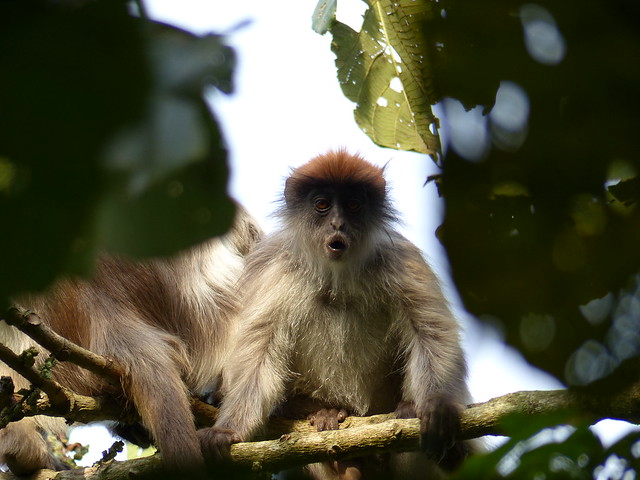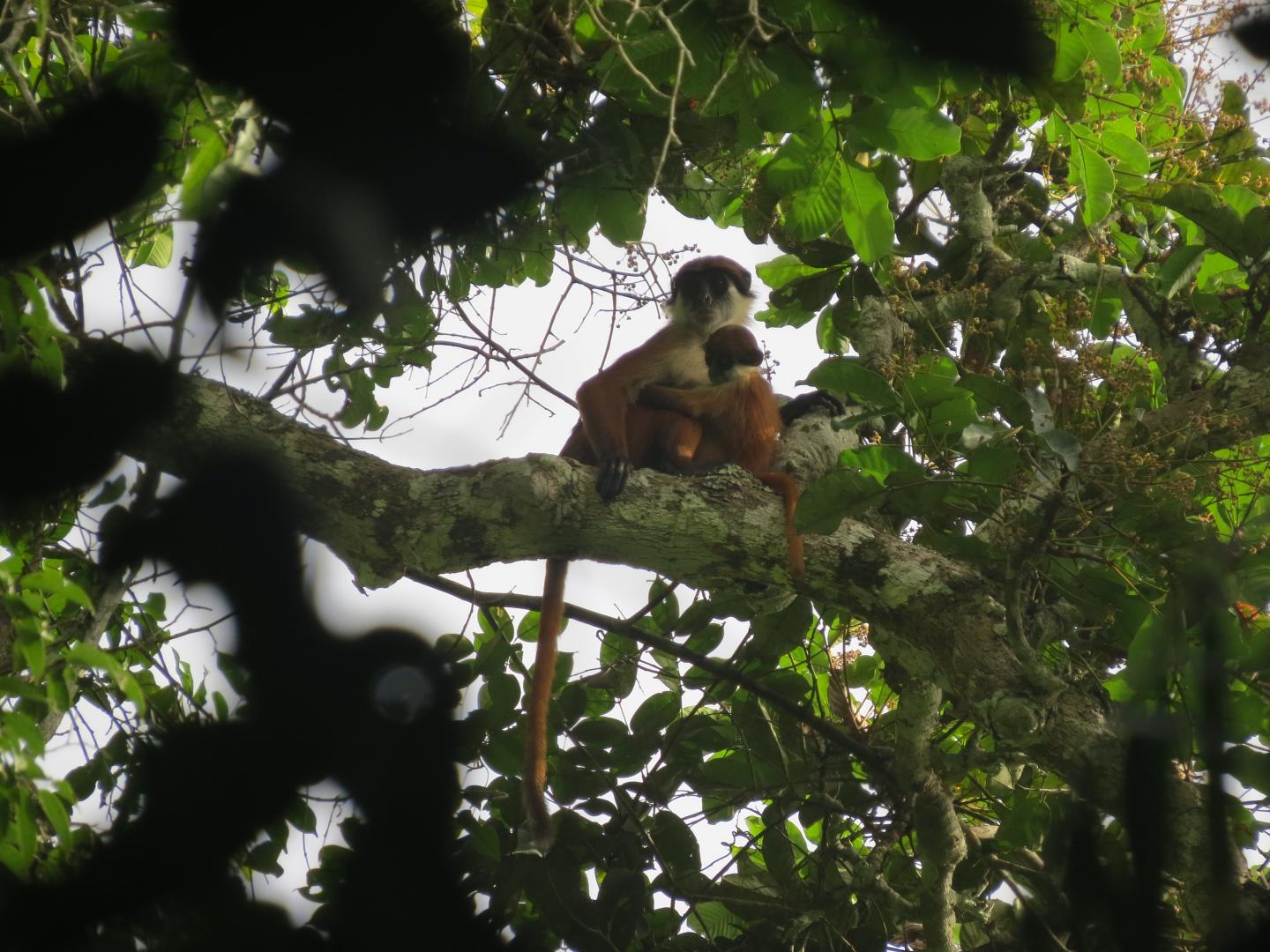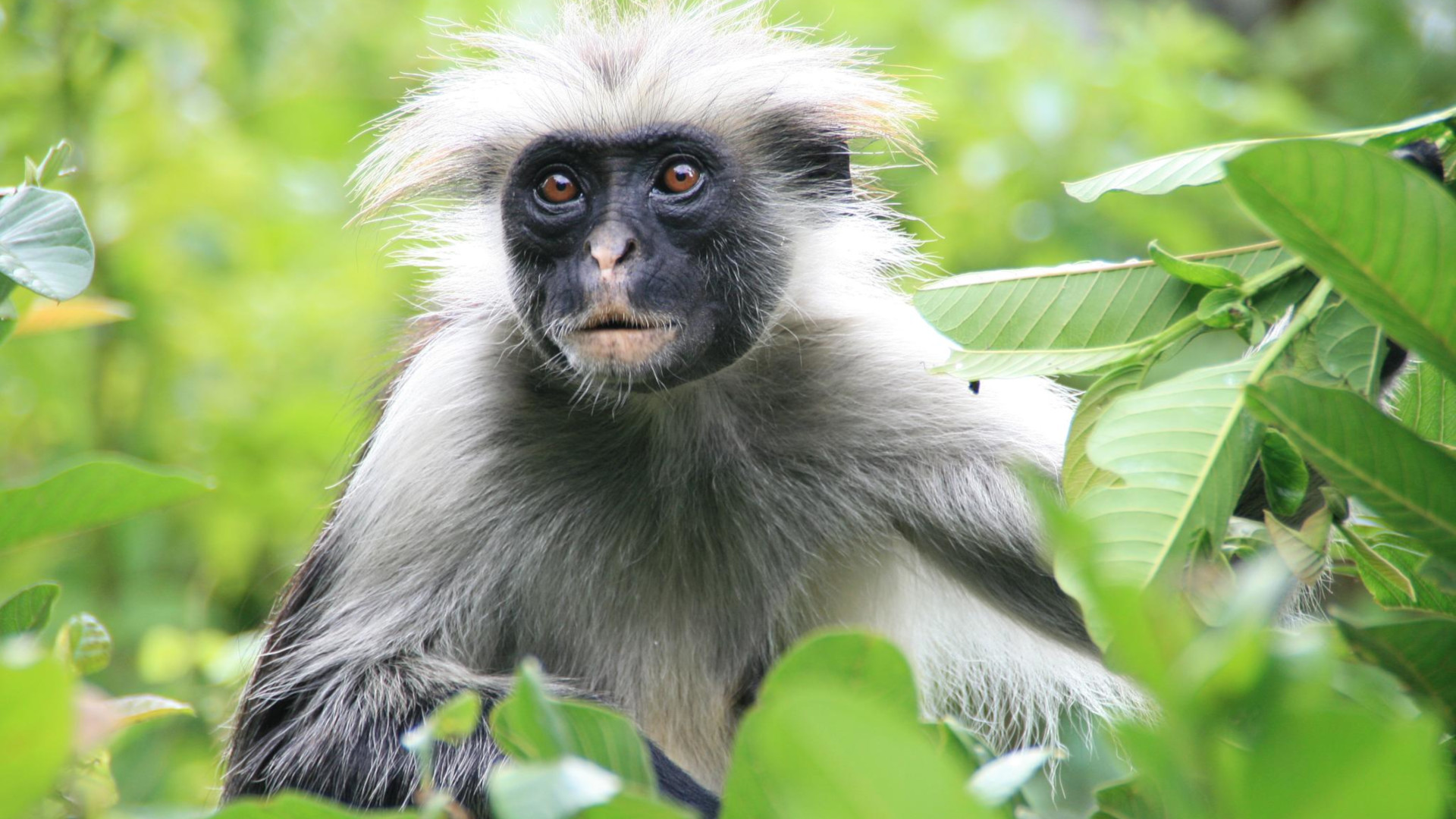Does a rare monkey still roam what’s left of the forests of Côte d’Ivoire?
“We haven’t given up on it,” says Russ Mittermeier, referring to the delightfully named Miss Waldron’s red colobus (Piliocolobus waldronae), a species that hasn’t officially been seen in more than four decades due to pressures from hunting and deforestation. “We’re still carrying out surveys in the hopes of finding it. I mean, it’s down to the last individuals if there are any still left, but we’re not ready to declare it extinct yet.”
 The last time a primatologist saw the Miss Waldron’s was back in 1978. Conservationists did consider the species extinct for a short period, but that changed after a hunter turned up with a recently killed monkey in 2002. After that some colobus calls were reportedly heard in 2008, but the creatures haven’t been seen or heard from since.
The last time a primatologist saw the Miss Waldron’s was back in 1978. Conservationists did consider the species extinct for a short period, but that changed after a hunter turned up with a recently killed monkey in 2002. After that some colobus calls were reportedly heard in 2008, but the creatures haven’t been seen or heard from since.
As a result of this lack of sightings, the International Union for Conservation of Nature last week took the rare step of listing the species as “critically endangered (possibly extinct).”
And unfortunately, other red colobus species could soon join it.
“This is kind of the tip of the iceberg,” says Mittermeier, chair of the IUCN Species Survival Commission Primate Specialist Group and chief conservation officer of the nonprofit Global Wildlife Conservation. “There are several other species that we’re really concerned about, as they are in very, very low numbers and in critical condition.”

The exact number of red colobus species has never been settled upon — it could be as high as 18 or 20 — but the IUCN Red List has assessed the extinction risk for 13 Piliocolobus species. Four are listed as critically endangered, with another seven assessed as endangered. Virtually all have ongoing declines in their populations.
This probably makes the red colobus Africa’s most-threatened primate genus.
What’s driving this decline? “The red colobus seems to be especially vulnerable to hunting,” says Mittermeier. “They live in large groups and they’re relatively easy to hunt compared to a lot of other primates.”
Each species faces different levels of hunting pressures, but the ones in West and Central Africa where the bushmeat trade is at its strongest face the most risk. “Where bushmeat hunting is a big issue, especially where it reaches commercial levels, they’re really under the gun,” he says.
It’s not just humans hunting red colobus. They’re also a favorite prey of chimpanzees in places where the species’ ranges overlap.
Add habitat loss onto that hunting pressure, and there’s not much opportunity for any red colobus species, in particular the Miss Waldron’s. “There’s not a lot of habitat left,” says Mittermeier of the situation in Côte d’Ivoire, where the most recent deforestation threat has come from the cocoa industry.
For other red colobus species, deforestation and habitat fragmentation have created new risks, including malnutrition and parasites.
Can these declines be reversed? Conservationists hope so. They think red colobus could even be used as a kind of flagship species group that would help to preserve other species. A 2012 paper identified red colobus and several other animals as “Cinderella species” — those animals that are aesthetically appealing but currently overlooked, which could then serve as ways to protect entire habitats and the wide range of species that live within them.
With this in mind, a range of governments and conservation groups, including the recently formed African Primatological Society, are currently working on a red colobus conservation action plan. That will involve a breadth of activities that could help conserve the various species.
“We’ve got to do more survey work to find out where they are — you know, what’s left,” says Mittermeier. “And then we’ve got to put in place protected areas, education campaigns, try to do ecotourism for them. I’m a big fan of primate ecotourism and given the rarity of some of these animals, maybe we could use ecotourism as a mechanism to conserve them and try to get the attitudes changed toward these animals in general. It’s the usual range of activities that we undertake when we’re doing any kind of a primate conservation project.”
What’s different here is that the efforts will take place on a genus level. “We’ve done it for individual species, but now we’re looking at a certain genera that are particularly vulnerable,” he says.
Is there still hope of finding the Miss Waldron’s red colobus? Global Wildlife Conservation is looking for it right now, as part of its Search for Lost Series projects. “We’re going to give it another two or three years of intense surveying, at least,” says Mittermeier.
And there’s actually a good reason not to give up: Another lost species, the Bouvier’s red colobus (P. bouvieri), was rediscovered just four years ago when researchers found a small group of monkeys — including a female and infant — in the Republic of Congo. Before that no one had seen the species in more than 50 years.

That’s why Mittermeier isn’t ready to give up on the Miss Waldron’s.
“These African primates that have been hunted, they can be pretty sneaky,” he says. “They can hide pretty well.”
Now it’s up to scientists to seek them out, while there’s still time to save what might be left.
![]()



2 thoughts on “Possible Monkey Extinction Highlights the Risk to Africa’s Most Endangered Primate Group”
Comments are closed.